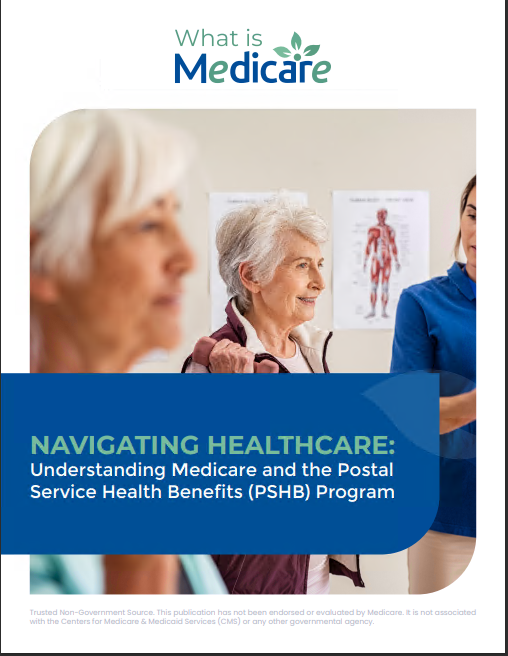Key Takeaways
-
Medicare consists of multiple parts, each with its own rules, coverage scope, and cost structure. Assuming it’s all-inclusive can lead to gaps in your healthcare coverage.
-
Enrollment timing and plan selection have long-term financial and medical consequences. It’s crucial to understand the deadlines and penalties that may apply.
Medicare Is More Complex Than It Appears
Many people think Medicare is a one-size-fits-all health insurance plan for those aged 65 and older. But once you start digging into the actual structure, timelines, and coverage rules, you’ll realize that it’s not nearly as simple as it seems. Medicare involves several parts, distinct enrollment periods, and potential penalties if you make the wrong move or delay decisions.
Understanding Medicare starts with realizing that it’s not just a single program, but a combination of options and responsibilities. And getting it wrong can cost you money or limit your access to care.
The Four Main Parts of Medicare
Medicare is divided into four major components, and each serves a different purpose:
Part A – Hospital Insurance
This part covers inpatient hospital stays, skilled nursing facility care, hospice, and some home health care services.
-
Most people do not pay a premium for Part A if they or their spouse worked and paid Medicare taxes for at least 40 quarters.
-
The 2025 inpatient hospital deductible is $1,676 per benefit period.
Part B – Medical Insurance
Part B covers outpatient care, doctor visits, durable medical equipment, and preventive services.
-
The standard monthly premium in 2025 is $185.
-
The annual deductible is $257.
-
After meeting the deductible, you generally pay 20% of the Medicare-approved amount for most services.
Part C – Medicare Advantage
Offered by private insurers approved by Medicare, these plans include all benefits of Parts A and B and may offer additional coverage like dental or vision. However, plans differ greatly, and you must continue paying your Part B premium.
-
These plans often have their own deductibles, copayments, and networks.
-
Coverage and out-of-pocket costs vary widely by plan and location.
Part D – Prescription Drug Coverage
Part D helps cover the cost of prescription medications. Plans are offered by private companies, and you must choose and enroll in one separately unless you have a Medicare Advantage plan that includes drug coverage.
-
The maximum deductible for Part D in 2025 is $590.
-
Out-of-pocket drug costs are now capped at $2,000 annually, a major change from previous years.
Enrollment Isn’t Automatic for Everyone
Another widespread misunderstanding is the assumption that you’re automatically enrolled in Medicare at 65. That’s only true if you’re already receiving Social Security or Railroad Retirement Board benefits. If not, you must actively enroll.
Initial Enrollment Period (IEP)
-
Begins three months before your 65th birthday, includes your birth month, and ends three months after.
-
Missing this window can lead to lifetime penalties.
General Enrollment Period (GEP)
-
Runs from January 1 to March 31 each year.
-
Coverage begins July 1, and penalties may apply for late enrollment.
Special Enrollment Period (SEP)
-
Available if you delayed Medicare due to employer coverage.
-
You generally have 8 months to enroll after losing employer coverage.
Penalties Can Last a Lifetime
Many people delay enrolling in Medicare Part B or Part D, thinking they can join later without consequence. But late enrollment usually comes with a penalty:
-
Part B Penalty: A 10% increase in your premium for each 12-month period you delayed enrollment without other creditable coverage. This penalty lasts as long as you have Part B.
-
Part D Penalty: Calculated by multiplying 1% of the national base beneficiary premium by the number of full months you were without creditable drug coverage. This also continues permanently.
Medicare Doesn’t Cover Everything
Original Medicare (Parts A and B) does not cover all healthcare costs. Here’s what it typically doesn’t include:
-
Routine dental, vision, or hearing care
-
Long-term custodial care
-
Most prescription drugs (unless you add Part D)
-
Overseas medical care
You’ll either need to pay out of pocket, purchase supplemental coverage, or enroll in a plan that includes extra benefits.
Out-of-Pocket Costs Still Apply
Medicare is not free. Even with Original Medicare, you are responsible for:
-
Premiums for Part B and Part D
-
Deductibles, coinsurance, and copayments
-
Costs above Medicare-approved amounts if you see non-participating providers
In 2025, the annual out-of-pocket maximum for Medicare Advantage plans is $9,350 for in-network services, though this doesn’t apply to Original Medicare.
Supplemental Coverage May Be Needed
Many people choose to buy a Medigap (Medicare Supplement) plan to help pay for costs not covered by Original Medicare. These policies are only available if you have Parts A and B and are not enrolled in a Medicare Advantage plan.
-
Medigap plans help with copayments, coinsurance, and deductibles.
-
They don’t include drug coverage, so you’d still need a Part D plan.
Your eligibility for certain plans can change if you miss your Medigap Open Enrollment Period, which begins the first month you’re 65 or older and enrolled in Part B.
Medicare Advantage Offers Extras—But With Limits
Medicare Advantage plans often advertise extra benefits like dental, hearing, and wellness programs. While this is attractive, it’s important to read the fine print.
-
These benefits vary by plan and are not standardized.
-
You must use in-network providers and get referrals in some cases.
-
Out-of-pocket limits protect you to an extent, but costs can still add up if your plan has high cost-sharing.
Your Choices May Be Locked In for a Year
Every fall, Medicare has an Annual Enrollment Period from October 15 to December 7. This is when you can:
-
Switch from Original Medicare to Medicare Advantage or vice versa
-
Change your Medicare Advantage plan
-
Enroll in, drop, or switch a Part D plan
Changes take effect on January 1 of the following year.
Unless you qualify for a Special Enrollment Period, you’ll be locked into your selection for the year.
Medicare and Employer Coverage Can Overlap
If you’re still working at 65, you might wonder whether to enroll in Medicare or stick with employer insurance. This depends on the size of your employer:
-
If your employer has 20 or more employees, your group plan usually pays first, and Medicare can be secondary.
-
If fewer than 20, Medicare becomes primary, and you may need to enroll in Part A and B to avoid coverage gaps.
Coordination of benefits becomes key to avoiding unexpected bills. It’s worth consulting a licensed agent in this scenario.
Medicare and Medicaid Are Not the Same
These two programs are often confused:
-
Medicare is a federal health insurance program mostly for people aged 65+ or those under 65 with certain disabilities.
-
Medicaid is a joint federal and state program offering assistance to people with limited income and resources.
Some individuals are “dual eligible” and qualify for both. In that case, Medicare usually pays first, and Medicaid helps with remaining costs.
You Need to Review Your Plan Every Year
Healthcare needs and Medicare plans change over time. What worked last year may not be your best choice now.
-
Plan benefits, formularies, provider networks, and costs may shift annually.
-
The Annual Notice of Change (ANOC) outlines these updates.
-
Comparing options during Open Enrollment helps you stay covered appropriately and affordably.
Misunderstanding Medicare Can Be Costly
Thinking Medicare covers everything or that you can delay decisions without consequences can lead to financial strain, denied claims, and limited access to care. Whether it’s a penalty for late enrollment or missing out on needed drug coverage, the consequences are real.
Understanding Medicare Starts With Asking the Right Questions
Before you make decisions, you should understand your eligibility, the parts of Medicare, enrollment timelines, costs, and your personal healthcare needs. This knowledge puts you in control of your benefits and prevents avoidable mistakes.
Get Clarity Before Making a Medicare Decision
Medicare may seem straightforward, but the details are anything but. With so many parts, rules, and exceptions, making an informed choice takes time and attention. A little planning now can prevent costly surprises later.
If you’re feeling uncertain, connect with a licensed agent listed on this website to review your options and get personalized guidance.










